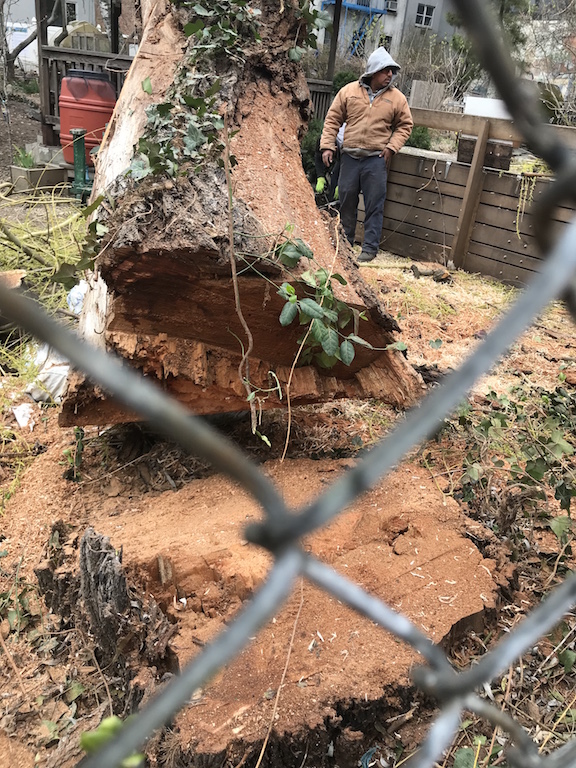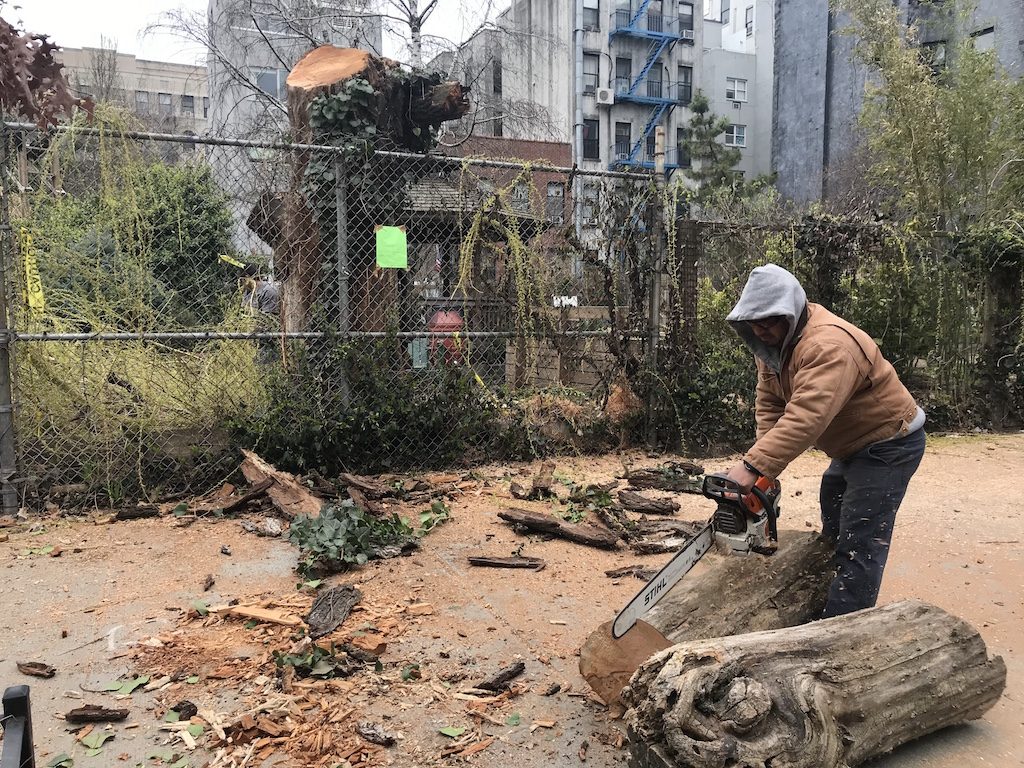BY SARAH FERGUSON | On Fri., April 5, workers contracted by the Parks Department felled “Krusty,” the last of the three towering willow trees that had dominated La
Plaza Cultural for more than 40 years.
The beloved tree in garden at E. Ninth St. and Avenue C was dubbed Krusty after Krusty the Clown on “The Simpsons,” after it lost its feathery crown during a storm a few years
back. It had also become a bit crusty due to an orange “hen of the woods” fungus that had begun infesting its bark.

The fact that it needed to come down is apparent in a video, which shows a pair of workers yanking down the 3-foot-wide trunk with a single tug of a rope tied to its base.
It was an ignoble end for this giant, which was planted in 1977 by legendary Green Guerilla gardener Liz Christy and members of the Puerto Rican activist group CHARAS after they took over what had been a series of barren, rubble-strewn lots.
Over the years, the willows became an iconic presence in Loisaida, so their loss has been keenly felt. Reverend Billy and garden members hosted a wake for Krusty’s more popular sibling “Cher,” the largest of the three willows, which was cut down in 2017. Like Krusty, Cher was determined to be a danger due to significant rot at its base.

“Wally,” the other willow, came crashing down during Hurricane Irene in August 2011.
The loss of the trio of trees marks the end of an era for La Plaza. The city is now installing a generic steel fence to replace the old chain-link one that had been encrusted with hundreds of colorful “flowers” created from recycled cans and detergent bottles.

For 20 years, local artist Rolando Politi festooned the fence with these “winter flowers,” as he dubbed them because they were most visible during winter, before the honeysuckle and trumpet vines enveloped them.
Now those vines, too, are gone, and the garden will likely be closed to the public through July as the city installs the new fence and new sidewalk.

















